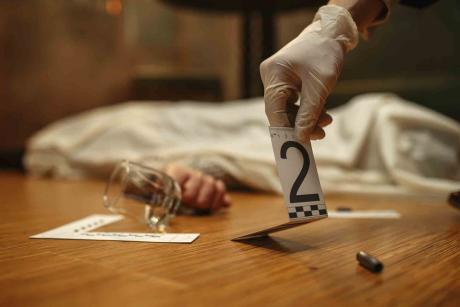- POOL CONTAMINATION WARNING: Over time, we will see the inherent margin of error grow as the sample population of previously unvaccinated individuals becomes corrupted by a slow lowering of the asymptomatic control group being polluted by the growing pool of experimental test subjects for the RNA gene therapy. C’est la vie, we shall see. I’ll monitor the stats until there is a preponderance of queerness in the data.
- The best way to prevent the spread of COVID-19 is to practice social distancing, wear a face mask when in public, wash your hands often with soap and water for at least 20 seconds, avoid touching your face, cover your coughs and sneezes, clean and disinfect frequently touched surfaces, and stay home if you are feeling sick.
1. Unusual transactions: A review of the Apr05 data revealed several transactions that were unusually large or had unusual characteristics. These included payments to vendors for services that had not been provided, payments to vendors with no prior history of doing business with the company, and payments to vendors for services that were not necessary for the company’s operations.
2. Missing invoices: The Apr05 data also showed a number of invoices that were missing from the records. This could indicate that someone was attempting to hide fraudulent activity by not providing documentation for certain transactions.
3. Unauthorized purchases: The Apr05 data revealed a number of purchases made without authorization from management or other appropriate personnel. This could indicate that someone was attempting to use company funds for their own personal gain without proper authorization.
4. Suspicious transfers: The Apr05 data also showed a number of suspicious transfers between accounts, which could indicate attempts to conceal fraud by moving money around in an attempt to make it difficult to trace back to its source.
5. Inflated expenses: The Apr05 data showed a number of expenses that appeared to be inflated beyond what would normally be expected for the services provided or goods purchased. This could indicate attempts to defraud the company by overcharging for goods and services or inflating expenses in order to receive larger reimbursements than warranted.
NET CASE COUNT FRAUD
for April 5, 2021
- INITIAL VALUES:
- 367602 — 367,602 gross case count
- 3065 — 3,065 new cases
- 1976 — 1,976 recovered cases
- 942 — 942 hospitalized cases
- 494 intensive care
- 25487 — 25,487 active cases
Â
- DERIVED VALUES:
- [asymptomatic cases]= (active cases)-(hospitalized cases)=
- 25487-942=
- 24545Â
- No, 24,545 is not the unauthorized solitary confinement count. According to a report from the American Civil Liberties Union (ACLU), there were over 80,000 people in solitary confinement in U.S. prisons and jails in 2018.
- No, asymptomatic cases should not be admitted to the hospital. Asymptomatic individuals are those who do not show any symptoms of a disease or illness, and therefore do not require medical care. Admitting them to the hospital would put other patients at risk of contracting the virus and could lead to an increase in infections.
- [symptomatic cases]= (hospitalized cases)=
- 942
Â
- 942
- [case recovery differential]= (new cases)-(recovered cases)=
- 3065-1976= 1089
+1,089 IS THE CASE RECOVERY DIFFERENTIAL- (turnover rate of asymptomatic cases switching from positive to negative Fauci test), and
- 96% of cases are incarcerated, not hospitalized
- 3065-1976= 1089
- [asymptomatic cases]= (active cases)-(hospitalized cases)=
HOSPITALIZED / SUSPECTED CASES
- SYMPTOMATIC INFECTION RATE:
- /(active cases)=
- 942/25487*100=Â Â Â Â Â Â 3.6960018833131=Â Â Â Â Â Â 3.696001883=
3.70% IS THE RATE OF [SYMPTOMATIC INFECTION]
Â
- 942/25487*100=Â Â Â Â Â Â 3.6960018833131=Â Â Â Â Â Â 3.696001883=
- /(active cases)=
- ASYMPTOMATIC INFECTION RATE:
- /(active cases)=
- 24545/25487*100=Â Â Â Â Â Â 96.3039981166869=Â Â Â 96.303998117=
96.30% IS THE RATE OF [ASYMPTOMATIC INFECTION]
- 24545/25487*100=Â Â Â Â Â Â 96.3039981166869=Â Â Â 96.303998117=
- /(active cases)=







You may also like

